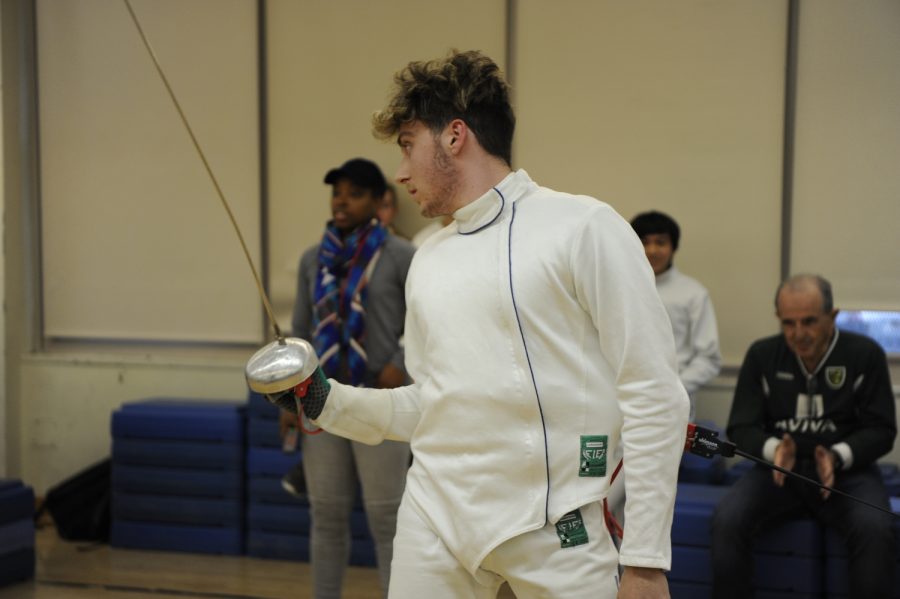Pay the Kids!
An Argument for Paying Athletes who Play for Their Colleges
Jason Post ‘19 strongly believes that all athletes, regardless of their sport, should receive some incentives for competing on college sports. As a member of Boys’ Varsity Fencing, this may apply to him, depending on the college in which he ultimately enrolls.
From Kobe Bryant to LeBron James, athletes deemed ready for the next step have previously been allowed to skip higher education in order to go straight into professional sports. Currently, the National Basketball Association has a rule that requires athletes to be nineteen-years-old, or at least one year removed from high school, to declare for the draft. As a result of this rule, athletes have been finding loopholes in the system by playing overseas or in developmental leagues. With this in mind, one thing is clear — it’s time to pay student athletes.
Some student athletes believe they are ready to become pro athletes after high school, and believe that attending college would just slow down the process of playing professionally. These student athletes, also known as ‘one-and-dones,’ have a history of attending very strong schools with competitive athletics programs, such as Duke University, in order to play under a national spotlight to gain exposure for professional teams. However, many of these ‘one-and-dones’ believe that the education and free tuition they are receive are not enough.
Many sports do not have a major professional league like the NBA, such as fencing or swimming. This leads some to believe that only student athletes with a potential to continue their respective sports professionally should be allowed to receive money. However, Jason Post ’19, a Duke Fencing committed accepted student, believes that all student athletes should receive some financial benefits. “Regardless of their sport, students athletes should be receiving a stipend or payment,” Post said. “A student athlete puts in the same effort regardless of their sport and this fact should be clear to all colleges and the NCAA,” said Jason Post ‘19.
If student athletes are to be paid, there is one major question: where will the money come from? It does not make sense for colleges to pay their athletes, because not all programs generate the same revenue from ticket sales and T.V. deals. Satruhon Ramnarayan ‘19 believes that the source of the money should be attributed to the strength of a school’s sports program. The National College Athletes Association (NCAA) should be responsible for paying teams that generate a large percentage of revenue for the NCAA. “Athletes of sports that don’t generate as much revenue should be paid by the college they represent,” Ramnarayan said.
“A student athlete puts in the same effort regardless of their sport and this fact should be clear to all colleges and the NCAA,” said Jason Post ‘19.
If the NCAA continues to only grant student athletes with free tuition and academic scholarships, student athletes may turn to alternatives. Take LaVar Ball, the C.E.O. and founder of the ‘Big Baller Brand,’ as a prime example. Ball launched an alternative to college sports, called the Junior Basketball Association, attracting players by promising $3,000 a month to prospects who wished to join the league. Along with the money, Ball determined the top players in the league and pitted them against teams in Europe in order for the prospects to gain attention in European Professional Leagues.
Starting the summer of 2019, the NBA’s Developmental League, the G-League, will offer top prospects $125,000 to play in their league. “In the long run, I believe that many paid professional leagues will emerge and attract kids just out of high school. Most of the talent would end up in these leagues, and the NCAA wouldn’t be as competitive,” Ramnarayan said.
With so many potential options for student athletes, the NCAA may no longer be host to the best prospects in the world.
Sabareesh Vishwanathan is a Staff Reporter for ‘The Science Survey’ and a Groups Section Reporter for ‘The Observatory’ yearbook. He admires journalistic...
Celeste Abourjeili is the Editor-in-Chief of ‘The Science Survey.’ She has a passion for journalistic writing because it gives voice to all groups...

